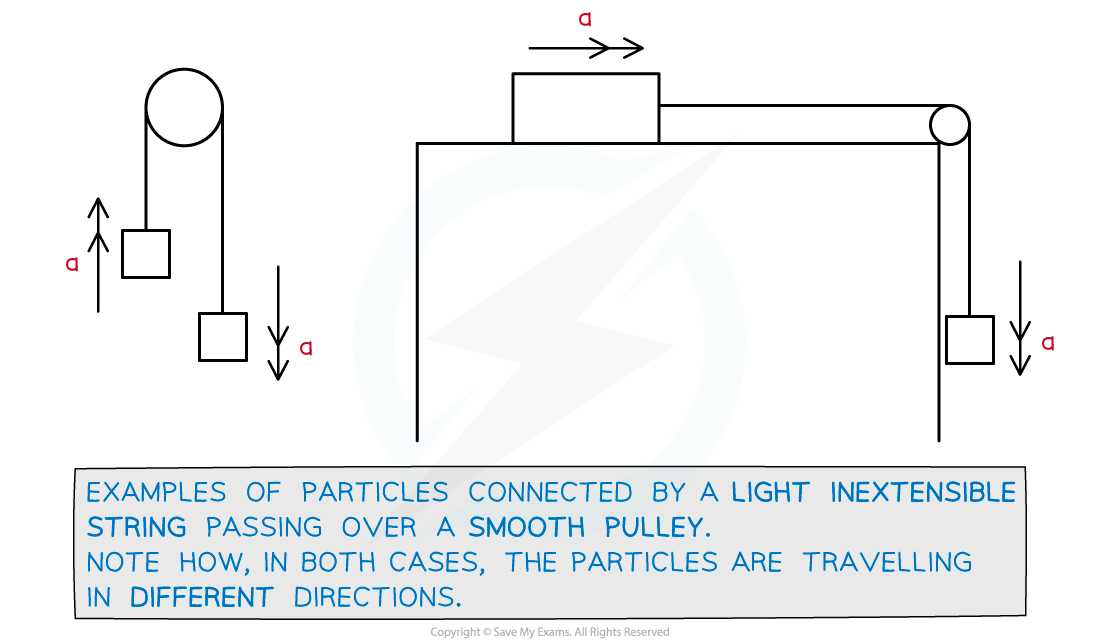Connected Bodies (Pulleys) (Edexcel AS Maths) : Revision Note
Did this video help you?
Connected Bodies - Pulleys
What is a pulley (or peg)?
A pulley is a wheel like device that rotates as a string passes over it allowing motion of any particles attached to the string
Pulleys allow a (inextensible) string to change its orientation
In A level mathematical models, pulleys will always be smooth and light, so there is no friction involved at the pulley and its mass is negligible
A peg is similar to a pulley but is a fixed point that a particle can be suspended from (like a nail in a wall)

How do I solve pulley questions?
In all pulley questions the particles are moving in different directions so are considered separately rather than the system being treated as one
If a particle is in motion in the direction being considered then Newton’s Laws of Motion apply so use “F = ma” (N2L)
For constant acceleration the ‘suvat’ equations could be involved
Step 1. Draw a series of diagrams
Label the forces and the positive direction of motion for each particle.
Colour coding forces acting on each particle may help

Step 2. Write equations of motion, using “F = ma”
Equations 1 and 2: Treating each particle separately
(↑) T - m1g = m1a
(↓) m2g - T = m2a
Step 3. Solve the relevant equation(s) and answer the question
Some trickier problems may lead to simultaneous equations
Worked Example
A block of mass 25 kg lies on a smooth horizontal table. A light, inextensible string passes over a smooth pulley attached to the edge of the table. The string connects the 25 kg block to another, of mass 60 kg. that hangs freely as shown in the diagram below.
The system is released from rest.

Find the tension, T N , in the string and the acceleration, a m s-2 ,of the system.


Examiner Tips and Tricks
Sketch a diagram or add to a diagram given in a question.
All pulleys are smooth and light; in many questions the pulley itself can be ignored.
In pulley questions the particles will be moving in different directions - so each particle needs to be considered separately.
If one particle is on a horizontal surface (such as a desk or table) then the weight only need be considered if friction is involved (since F = μR and R is related to weight).

You've read 0 of your 5 free revision notes this week
Sign up now. It’s free!
Did this page help you?
